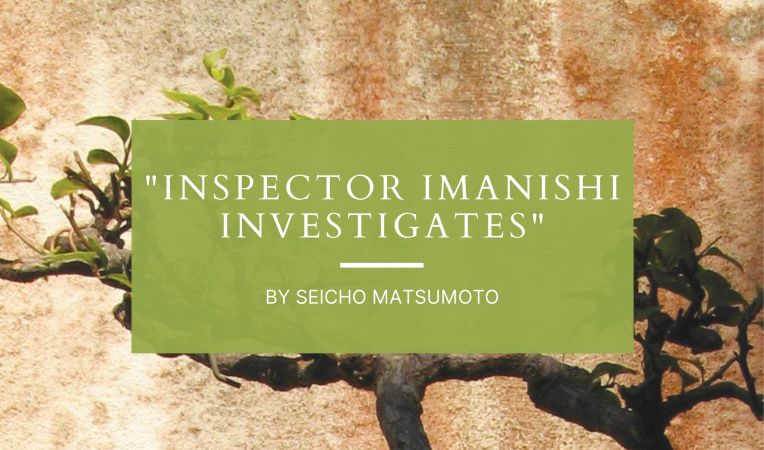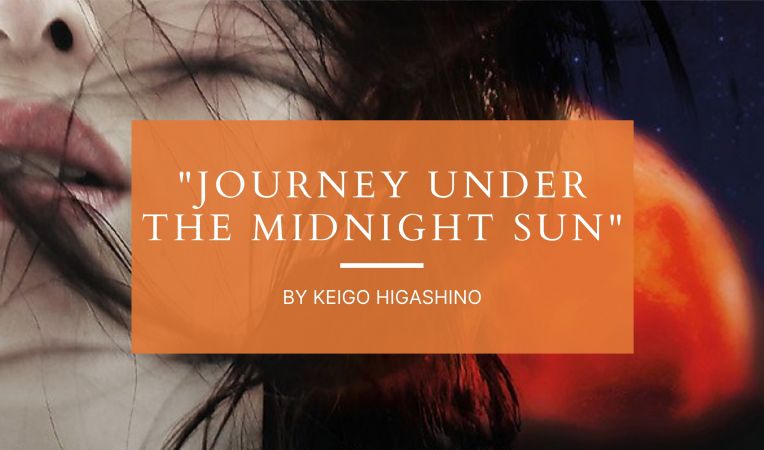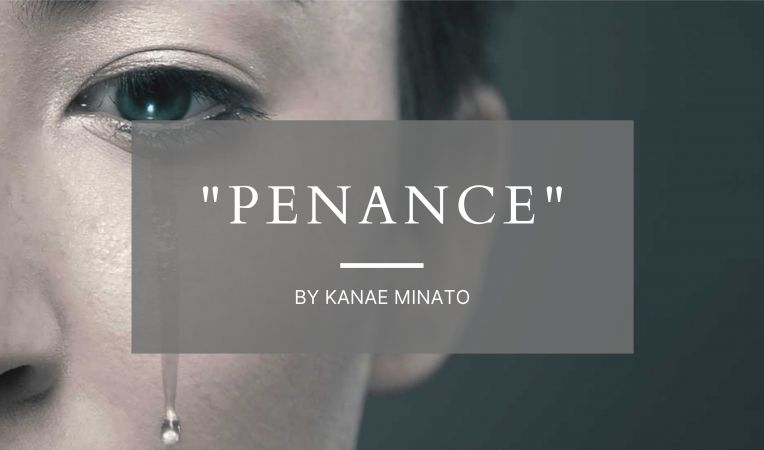
June 7, 2025
The Best Japanese Mystery Novels to Read in 2025
Honkaku, thrillers and crime sagas — Japan’s got it all
When it comes to mystery fiction, Japan is one of the world’s references that fans of the genre keep coming back to. From locked-room mysteries and whodunnits to decades-long murder tales and psychological thrillers, Japanese crime literature presents a vast range of subgenres that suit all tastes. Here’s a compilation of indispensable novels to read this year.
Advertisement
Early Modern Classics
Crime fiction is a particularly beloved genre by many, and for a good reason. After a rollercoaster of breathtaking twists and turns, they provide us with closure. The villain is caught, and justice is served. Sadly, in real life, we can’t always expect that.
As harsh and cold as the world may seem, many of us can relate to having escaped from our realities a few (or many) times and found comfort in a detective story or TV series.
A few must-reads in this category are Seicho Matsumoto’s “Inspector Imanishi Investigates” and Seishi Yokomizo’s “The Honjin Murders,” two early modern classics of the Japanese mystery genre.
“Inspector Imanishi Investigates” by Seicho Matsumoto

A dead body is found under the rails of a train in the early hours of a cold 1960s Tokyo morning. Possessing no documents and with a face so brutally damaged the police find it impossible to identify the victim.
The detective on the case, Inspector Imanishi, has only two clues to follow. The distinctive accent of a young man last seen with the victim, and a single word: “kameda.”
After months of following wrong leads and not a single solid suspect, the case is closed, unresolved. Imanishi, dissatisfied, cannot take the case out of his mind. But then, a series of strange but coinciding events lead him back to square one.
Credited with popularizing the mystery genre in Japan, “Inspector Imanishi Investigates” is one of Seicho Matsumoto’s most famous novels and a classic Japanese detective story.
Inspector Imanishi isn’t your typical eccentric, gifted detective with impressive deductive skills. He is a laid-back, quiet bonsai lover who enjoys spending his free time writing haiku and folding paper cranes.
With the perfect combination of a down-to-earth detective and a seemingly unsolvable crime, “Inspector Imanishi Investigates” is the best company for a stormy, indoor summer afternoon.
“The Honjin Murders” by Seishi Yokomizo

A spine-chilling scream cuts through the peaceful winter night after a long day of wedding festivities in the village of Okamura. Eerie music follows and soon after, the bride and the groom are found dead in their bed. Their bedroom locked from the inside.
A bloody katana, thrust into the fresh snow outside, is the murderer’s only trace—everything else has vanished. How could such an impossible crime have been committed?
A classic but only translated in 2019, Seishi Yokomizo’s massively popular “The Honjin Murders” won the first Mystery Writers of Japan Award in 1948. It was later adapted into a 1976 film titled Death at an Old Mansion.
The novel is a prime example of honkaku, a literary genre of Japanese detective fiction that emerged in the 1920s. Honkaku focuses on “fair play”—no unexpected twists or villains show up right at the end of the plot. The author lays out all the necessary clues, giving readers an equal chance to solve the riddle alongside the detective. The result is a thrilling journey driven from pure logical reasoning.
Think you’ve got a Sherlock Holmes knack for crime puzzles? Then have a try at Yokomizo’s clever mystery riddle.
Gripping Crime Sagas
Famous for his crime sagas, including the highly acclaimed “The Devotion of Suspect X,” Keigo Higashino is one of Japan’s current masters of mystery storytelling. He’s won several major Japanese awards and with nearly twenty of his books being turned into films and TV series. He also served as the 13th President of Mystery Writers of Japan, which awards the Mystery Writers of Japan Award to writers every year. Reading Higashino is mandatory for fans of modern Japanese crime literature.
“The Devotion of Suspect X” by Keigo Higashino

When Yasuko Hanaoka’s abusive ex-husband appears at her door to extort money, the situation quickly takes a dark turn. He ends up strangled by Yasuko and her daughter.
After witnessing the incident from the apartment next door, math teacher Ishigami decides to help his neighbors in covering up the murder.
Assigned to the case is detective Kusanagi, who grows increasingly suspicious of the mother and daughter despite not identifying any holes in their alibi. So he goes to seek help from his physicist friend Dr. Yukawa who often assists in police cases.
What follows is a competition between two geniuses trying to outsmart the other. The murder and the culprit are already laid out from the beginning. Thus, “The Devotion of Suspect X” focuses on the how and the why, leaving readers immersed in a competition of the highest stakes.
The author leaves you with two questions: Is there such a thing as an unsolvable puzzle, and how far would someone go to create one?
One of the most popular modern Japanese thrillers to date, Higashino’s “The Devotion of Suspect X” is drowning in awards. These include the coveted 134th Naoki Prize and the sixth Honkaku Mystery Award, one of the most prestigious awards for mystery novels in Japan. Alexander O. Smith masterfully translates the novel’s enticing plot into English, earning it a nomination for the 2012 Edgar Allan Poe Award for Best Novel.
Advertisement
“Journey Under the Midnight Sun” by Keigo Higashino

In Osaka, 1972, a man was found murdered at an abandoned building. Detective Sasagaki soon finds himself out of leads when two of the main suspects are found dead, and no more clues are discovered.
Two kids, however, catch his attention throughout the investigation. The gloomy son of the victim Ryo, and the alluring daughter of the main suspect Yukiho.
In a tangled web of characters and events, follow detective Sasagaki in this epic 20-year riddle as he relentlessly attempts to piece together strange misfortunes, sudden twists and unexpected connections.
Equally thrilling as “The Devotion of Suspect X,” Higashino’s earlier bestseller “Journey Under the Midnight Sun” is one of the best examples of the author’s sleight of hand. With an episodic plot, a long list of minor characters, and references to major historical events of 1970s Japan, “The Devotion of Suspect X” might be challenging at first for the inexperienced reader. However, the complexity of the epic allows a deep dive into the psyche and the hearts of the characters.
Vantage Point, Mosaic Plots
A crime told from multiple points of view is a familiar feature of the mystery genre in Japan. One of the earliest examples being Ryunosuke Akutagawa’s “In a Grove,” which inspired Akira Kurosawa’s renowned 1950 film, Rashomon.
However, it’s not every day that you come across authors who can skillfully bring fresh air to this writing style without making it seem forced. Riku Onda’s “The Aosawa Murders” and Kanae Minato’s “Penance” are two such examples. A series of vignettes work like puzzle pieces, gradually revealing clues about the culprit and their motive.
“The Aosawa Murders” by Riku Onda

In 1970s Japan, a freak mass murder takes place in a remote town on a stormy day. 17 people were found dead at a birthday party, including elderly and children. The police are puzzled—how can they catch the murderer when the only witness and survivor is a blind, sickly girl? They initially suspect several individuals, but suspicion soon narrows to one.
“You see, it’s a very simple story. If there are ten people in a house and nine die, who is the culprit?“
However, proving their guilt is a lot harder than it seems. People’s memories are faulty and their perspectives are biased. As much as you try to make the pieces fall perfectly in place, Onda takes you on a swirl of events and findings that contradict each other.
But it will leave you glued to the book until the end. In this dark, tantalizing journey that challenges the norms of the mystery genre, Onda gives voice to all of those involved in the crime and dives deep into their psyche, exploring their innermost fears and darkest secrets.
Don’t like a crime novel with an ambiguous ending? Then this book isn’t for you.
Advertisement
“Penance” by Kanae Minato

One afternoon, five girls were playing volleyball at the school’s grounds when they were approached by a stranger. The stranger tricked them into leaving one of their friends by herself with him. Hours later, she’s dead.
To the frustration of the policemen and the despair of the victim’s mother, the remaining girls cannot remember the perpetrator’s face. Overcome with rage and profound sorrow, the mother curses her daughter’s surviving friends and vows to make them pay for their classmate’s death if no one solves the murder before the statute of limitations runs out.
Minato is also critically acclaimed author of “Confessions” and queen of iyamisu (Japanese for ‘eww’ mystery novels). And this popular mystery-turned-TV-series “Penance” is equally shocking and gut-churning. It pulls you into a disturbing account of murder, vengeance, obsession and manipulation.
Minato adds a new twist to the story as each girl, now adults, retell their journey in atoning for the girl’s murder. In a series of contradicting and intersecting stories, each presented in a different format, Minato shows her skill and versatility in weaving a tale of murder that will leave you holding your breath until the end.
Originally published June 17, 2021, updated on June 7, 2025.







